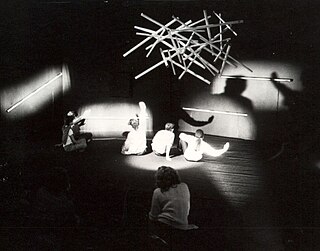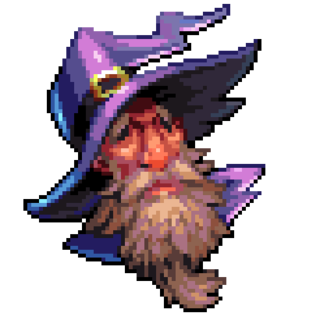
Animation is a method in which figures are manipulated to appear as moving images. In traditional animation, images are drawn or painted by hand on transparent celluloid sheets to be photographed and exhibited on film. Today, most animations are made with computer-generated imagery (CGI). Computer animation can be very detailed 3D animation, while 2D computer animation can be used for stylistic reasons, low bandwidth, or faster real-time renderings. Other common animation methods apply a stop motion technique to two- and three-dimensional objects like paper cutouts, puppets, or clay figures.

Computer animation is the process used for digitally generating animated images. The more general term computer-generated imagery (CGI) encompasses both static scenes and dynamic images, while computer animation only refers to moving images. Modern computer animation usually uses 3D computer graphics to generate a three-dimensional picture. Sometimes, the target of the animation is the computer itself, but sometimes film as well.

Digital art is an artistic work or practice that uses digital technology as part of the creative or presentation process. Since the 1960s, various names have been used to describe the process, including computer art and multimedia art. Digital art is itself placed under the larger umbrella term new media art.

Interactive art is a form of art that involves the spectator in a way that allows the art to achieve its purpose. Some interactive art installations achieve this by letting the observer or visitor "walk" in, on, and around them; some others ask the artist or the spectators to become part of the artwork.

Sinbad: Legend of the Seven Seas is a 2003 American animated adventure film produced by DreamWorks Animation and distributed by DreamWorks Pictures. Like Spirit: Stallion of the Cimarron, it combines traditional animation with some computer animation, and was directed by Tim Johnson and Patrick Gilmore and written by John Logan, and stars the voices of Brad Pitt, Catherine Zeta-Jones, Michelle Pfeiffer, and Joseph Fiennes. It covers the story of Sinbad, a pirate who travels the sea with his dog and his loyal crew, alongside Marina, the fiancée of his childhood friend Prince Proteus, to recover the stolen Book of Peace from Eris to save Proteus from accepting Sinbad's death sentence. The film blends elements from the One Thousand and One Nights and classical mythology.

Traditional animation is an animation technique in which each frame is drawn by hand. The technique was the dominant form of animation in cinema until computer animation.

Pixel art is a form of digital art, drawn with software, whereby images are built with the exclusive and intentional placement of pixels.

Jeffrey Katzenberg is an American film producer and media proprietor. He became well known for his tenure as chairman of Walt Disney Studios from 1984 to 1994. After departing Disney, he was a co-founder and CEO of DreamWorks Animation, where he oversaw the production of such animated franchises as Shrek, Madagascar, Kung Fu Panda, and How to Train Your Dragon. He has since founded a new media and technology company called WndrCo and was the founder of Quibi, a defunct short-form mobile video platform.

Spirit: Stallion of the Cimarron is a 2002 American animated Western film produced by DreamWorks Animation and distributed by DreamWorks Pictures. The film is directed by Kelly Asbury and Lorna Cook from a screenplay by John Fusco. The film follows Spirit, a Kiger Mustang stallion, who is captured during the American Indian Wars by the United States Cavalry; he is freed by a Native American man named Little Creek who attempts to lead him back into the Lakota village. In contrast to the way animals are portrayed in an anthropomorphic style in other animated features, Spirit and his fellow horses communicate with each other through non-linguistic sounds and body language like real horses.
A virtual artifact (VA) is an immaterial object that exists in the human mind or in a digital environment, for example the Internet, intranet, virtual reality, cyberspace, etc.
Teresa Cheng is an animation producer specifically skilled in computer graphics and most famously known for her work on Shrek Forever After, Madagascar, Batman & Robin, and True Lies. She has worked with major agencies such as Warner Brothers Studios, DreamWorks, assumed the role of general manager for Lucasfilm Animation, and most recently has become chair of the John C. Hench Division of Animation and Digital Arts at the USC School of Cinematic Arts.
Victoria "Vicky" Jenson is an American film director of both live-action and animated films, and has been said to be "one of Hollywood's most inspiring female Directors". She has directed projects for DreamWorks Animation, including Shrek, the first film to win an Academy Award for Best Animated Feature, giving rise to one of Hollywood's largest film franchises.

A pixel artist is a graphic designer who specializes in computer art and can refer to a number of artistic and professional disciplines which focus on visual communication and presentation. Similar to chromoluminarism used in the pointillism style of painting, in which small distinct points of primary colors create the impression of a wide selection of secondary and intermediate colors, a pixel artist works with pixels, the smallest piece of information in an image. The technique relies on the perceptive ability of the eye and mind of the viewer to mix the color spots into a fuller range of tones. Pixel art is often utilitarian and anonymous. Pixel design can refer to both the process (designing) by which the communication is created and the products (designs) which are generated.

Lisa Wray is a Pennsylvania-based artist, and one of the early pioneers of visual graphic media arts. Her works can be viewed as tradigital art and metaphysical art. Wray graduated from the Hussian School of Art, Philadelphia in 1979, where she studied commercial and fine art. She was a freelance artist in the late 1980s, and owned a print shop. Wray created some of the artwork in a series called the "Renaissance of Metaphysical Imagery" as early as 1978. In 1983, she started creating prototypes of the original works—from color copies, color photos or film negatives made in her graphic arts darkroom—in an attempt to produce metaphysical art, but discovered that the mechanical methods available could not achieve the accuracy of computer systems. "In 1983, when the first prototypes were made, the hardware did not exist to output high resolution in a hard copy form", she remembers.

Priscillano "Pres" Antonio Romanillos was an American animator who had a long and successful career at studios such as DreamWorks and Walt Disney. He was responsible for breathing life into many memorable animated characters including the Native American Little Creek in DreamWorks' Spirit: Stallion of the Cimarron, Pocahontas, and the villainous Hun Shan-Yu in Disney's Mulan.

New media art includes artworks designed and produced by means of electronic media technologies, comprising virtual art, computer graphics, computer animation, digital art, interactive art, sound art, Internet art, video games, robotics, 3D printing, and cyborg art. The term defines itself by the thereby created artwork, which differentiates itself from that deriving from conventional visual arts. New Media art has origins in the worlds of science, art, and performance. Some common themes found in new media art include databases, political and social activism, Afrofuturism, feminism, and identity, a ubiquitous theme found throughout is the incorporation of new technology into the work. The emphasis on medium is a defining feature of much contemporary art and many art schools and major universities now offer majors in "New Genres" or "New Media" and a growing number of graduate programs have emerged internationally. New media art may involve degrees of interaction between artwork and observer or between the artist and the public, as is the case in performance art. Yet, as several theorists and curators have noted, such forms of interaction, social exchange, participation, and transformation do not distinguish new media art but rather serve as a common ground that has parallels in other strands of contemporary art practice. Such insights emphasize the forms of cultural practice that arise concurrently with emerging technological platforms, and question the focus on technological media per se. New Media art involves complex curation and preservation practices that make collecting, installing, and exhibiting the works harder than most other mediums. Many cultural centers and museums have been established to cater to the advanced needs of new media art.

The visual arts are art forms such as painting, drawing, printmaking, sculpture, ceramics, photography, video, filmmaking, design, crafts and architecture. Many artistic disciplines such as performing arts, conceptual art, and textile arts also involve aspects of visual arts as well as arts of other types. Also included within the visual arts are the applied arts such as industrial design, graphic design, fashion design, interior design and decorative art.

Multi-image is the now largely obsolete practice and business of using 35mm slides (diapositives) projected by single or multiple slide projectors onto one or more screens in synchronization with an audio voice-over or music track. Multi-image productions are also known as multi-image slide presentations, slide shows and diaporamas and are a specific form of multimedia or audio-visual production.
Judith Jean Moncrieff, born in San Francisco, California, was a digital artist and a Founding member of the innovative group - Unique Editions - 5 internationally known artists who speak to issues, processes, corporate involvement in the arts, hardware and software issues and how substrate companies may best work with digital artists and corporations dealing with this subject. They give workshops, lectures and presentations in galleries, museums, colleges and universities around the world. In July 1997, hands-on experience in digital creation of imaging. They presented their work and had the artwork accessed by the National Museum of American Art/Smithsonian. Judith has received a medal from the Smithsonian Institution for this work in the innovation of art and technology, and her work is still currently held by the Smithsonian. She has recently added networking and experimental work with various corporations in all areas of printing and technology. As part of this search for technological futurism, Judith had become an active member of the International Association of Fine Art Digital Printmakers.

Spirit is an American media franchise owned by DreamWorks Animation, which began with the 2002 animated film Spirit: Stallion of the Cimarron written by John Fusco. The franchise follow the adventures of a Kiger Mustang stallion named Spirit.
















